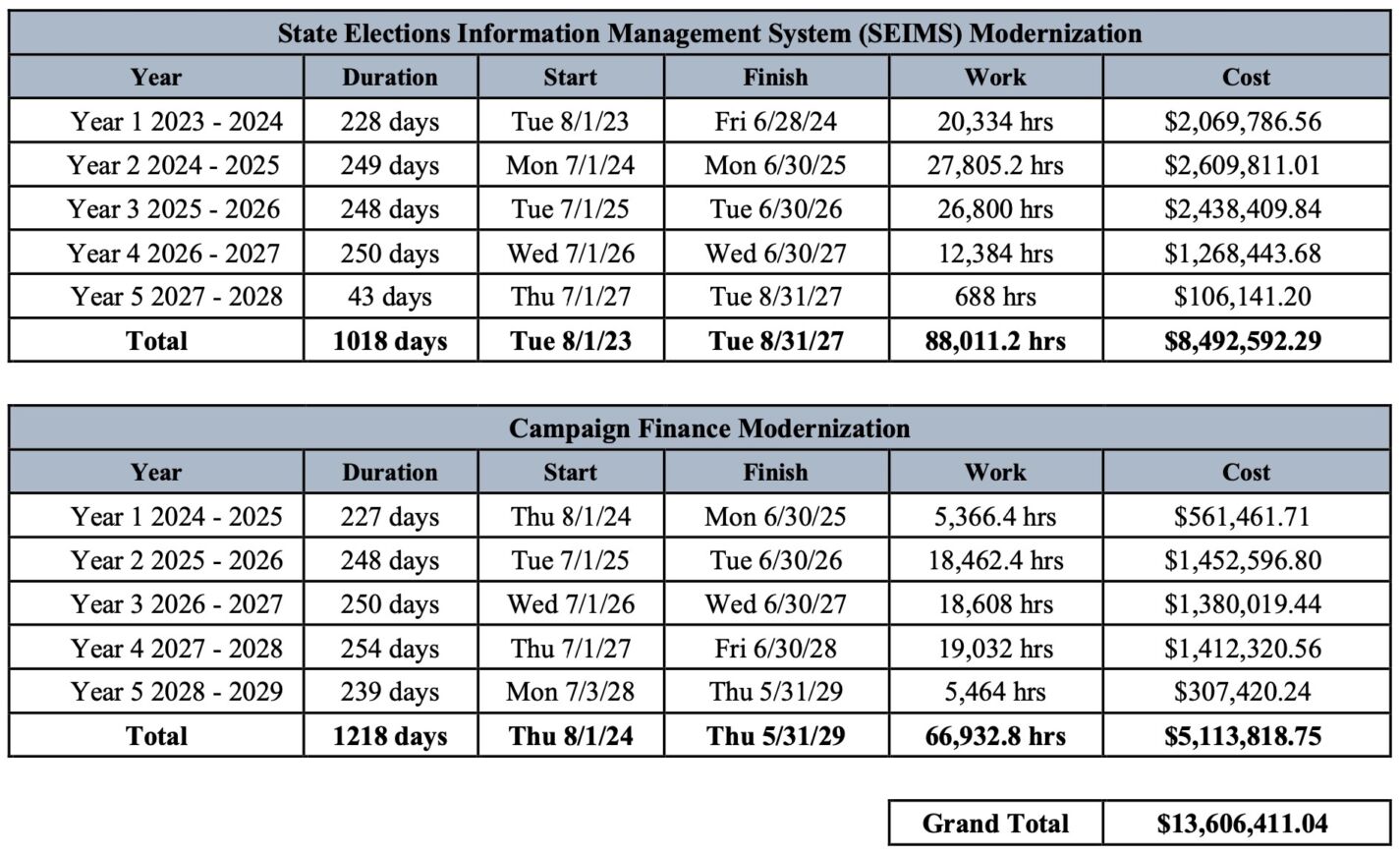- The North Carolina State Board of Elections uses two computer systems to manage data such as campaign fiance reports, voter registration, and election counts
- The Board has asked the General Assembly for $13.6 million to upgrade those systems
- Upgrading those systems would provide for more efficient and secure elections administration
The North Carolina State Board of Elections (SBE) has requested $13.6 million from the General Assembly above its normal operating budget to update computer systems. The request includes $8.5 million to upgrade the State Elections Information Management System (SEIMS) and $5.1 million for its campaign finance reporting system.
Those are important systems for running elections in North Carolina, but is that spending necessary?
What Systems Does the SBE Want to Upgrade?
The campaign finance reporting system is straightforward. It is the system used by campaigns to report contributions and expenditures.
But what is SEIMS?
The most efficient description of SEIMS I have seen comes from a somewhat dated data request form from the Moore County Board of Elections:
[It] is a suite of applications that automates voter registration and simplifies the administration of voter records. The suite contains a set of functions used for local processing in the counties. These functions include registering voters, verifying addresses, recording voter’s history, mailing absentee ballots, administering polling-places and others. The second is support for statewide functions, which are based on a central statewide database containing the voter registration and voter history data from all the counties in the state.
It is the state’s system for voter registration and election administration.
The system also helps counties clean their voter rolls (however imperfectly). The system checks for cross-county duplicates. It interfaces with the Department of Health and Human Services to check death records and the Department of Corrections’ system to check for felony conviction records, removing matching records from voter rolls. It also interacts with the Department of Motor Vehicles’ system to check the validity of driver’s license numbers in real time, which will become even more important with voter ID implementation.
In short, it is the one-stop administration shop for the SBE, all 100 of North Carolina’s county boards of elections, and other people who interact with the state’s election-related data.
Why Does the SBE Want to Update the Systems, and How Much Will It Cost?
Computer systems change – and age – rapidly.
Private enterprises update their technology regularly to help improve security, handle growth, increase productivity, and maintain compatibility with current technologies.
Government agencies face many of the same challenges as their computer systems age. The SBE claims their current systems are “antiquated, inefficient, and vulnerable to defects” (see page 21 of the SBE budget presentation). So, they are vulnerable to hacking or otherwise breaking down.
Updating the systems would allow SBE officials to add security measures they say cannot be grafted onto the current system, such as multifactor authentication. It would also improve user interfaces and allow DHHS to modify the systems more quickly in response to changes in election law.
DHHS provides their worst-case scenario if they do not get the money:
If the project is not funded, then the State risks the potential failure of the systems due to an unsupported platform using antiquated development coding and standards. A potential failure during a statewide election could result in having to conduct a new election, the costs for which exceed $17 million.
That $17 million plus is roughly the cost to the state and counties for running a statewide election.
The SBE says we can avoid that nightmare for the cost of $13.6 million. As seen in the charts below (sent by email from the SBE), that amount would be spread over six fiscal years, with the SEIMS update starting in 2023 and the campaign finance system update starting in 2024.
Breakdown of projected SEIMS and campaign finance system modernization spending by fiscal year

Source: North Carolina State Board of Elections
That would be total expenditures of $2.1 million in fiscal year 2023–24, $3.2 million in FY 2024–25, $3.9 million in FY 2025–26, $2.6 million in FY 2026–27, $1.5 million in FY 2027–28, and $0.3 million in FY 2028–29.
Should the General Assembly Provide the Funding?
So are the SBE’s computer systems as bad and in need of replacement as they claim them to be?
Part of the SBE’s claim is that the systems are too old to be updated and need to be replaced.
The SBE stated in a February budget presentation that their current systems “were developed starting in 1998.” In an IT request form, they said that the systems were developed “beginning in 1998.” (Emphasis added in both quotes.) They are not claiming that they are currently using 25-year-old technology that has never been updated.
SBE Executive Director Karen Brinson Bell was less guarded, saying in an interview, “A lot of folks don’t realize that our state election information management system dates back to 1998.” She admitted, however, that they have already made “some steps” in modernizing their systems during her time heading the SBE. No doubt there were also updates during the prior 20 years.
Nevertheless, even if the systems are not 25 years old, they are certainly aging and depend on old programming.
There are also increasing demands on the systems. The number of voter registrations has increased from 6,436,326 to 7,263,654 (nearly 13 percent) over the past ten years, with a corresponding increase in voter roll maintenance requirements. The SBE reports that public records requests have increased from 100 in 2020 to 300 in 2022. They must also process almost 400 data requests per year (page 14 of SBE budget presentation).
(On a personal note, as someone who regularly gets data from the SBE’s campaign finance page, I would welcome an update to that system to make it more efficient and user-friendly.)
In short, the systems should be updated to improve their security and efficiency. That seems like a good investment for something the Department of Homeland Security has designated as critical infrastructure.
The North Carolina House agrees; the House budget would include $5.6 million for the SBE’s “information technology projects” in the budget for the next two fiscal years (Section 2.2.(d)). It would be enough to cover what the SBE requested for those years. By comparison, that same section would include $15.0 million for technology updates for both the UNC system and the General Assembly. The Senate budget (same section), however, would not include any funds for updating the SBE’s computer systems.
As the General Assembly hammers out a final budget in conference, they should include funds to update the state’s election software systems.
